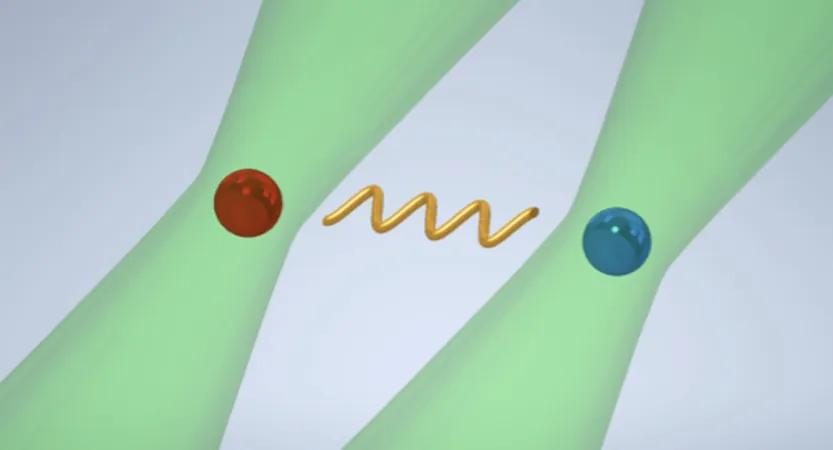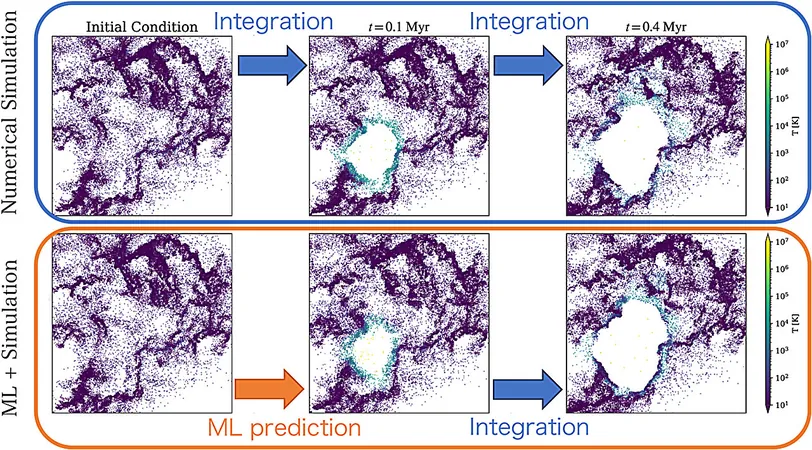
Breakthrough in Quantum Computing: Scientists Successfully Create Dual-Type Entangling Gates!
2025-01-15
Author: Nur
Introduction
In a groundbreaking step toward revolutionizing quantum computing, scientists at Tsinghua University, along with several other research institutes in China, have successfully realized an entangling gate that utilizes dual-type qubits. This pioneering achievement promises to enhance the scalability and reliability of quantum computers significantly!
Exploration of Dual-Type Qubits
As the quest for efficient quantum computing solutions intensifies, researchers are actively exploring methods to mitigate errors in quantum systems while keeping the complexity of these systems to a minimum. Enter dual-type qubits. These innovative qubits can represent quantum information across two distinct quantum states, potentially transforming the architecture of quantum computing by minimizing crosstalk between qubits and enhancing operational fidelity.
Research Overview
The research team detailed their approach in a paper published in *Physical Review Letters*, highlighting a strategy that allows for the direct entanglement of dual-type qubits without the need for additional hardware. “In ion trap quantum computation, encoding two types of qubits within the same ion species is a game-changer, allowing one type to carry information while the other type handles auxiliary operations,” explained Luming Duan, the senior author of the study.
Technical Breakthroughs
A significant breakthrough of the research lies in their ability to use a single 532 nm laser system to drive Raman transitions, leading to the entanglement of dual-type qubits seamlessly. “By designing multiple frequency components in the driving laser, we effectively couple two qubit types encoded in hyperfine levels of different ions, synchronizing with their collective oscillation,” Duan elaborated.
Experimental Results
The results of the experiments conducted by the team were nothing short of impressive. They achieved a remarkable Bell state fidelity of 96.3% when entangling dual-type qubits, a performance that rivals that of conventional same-type entangling gates. This achievement not only underscores the effectiveness of their method but also suggests that the realization of a dual-type entangling gate is devoid of fundamental limitations.
Future Implications
This breakthrough opens up new avenues in the field of quantum computing by hinting at the potential of error reduction without added complexity. The researchers are already planning to further enhance their techniques, focusing on improving the stabilization of optical paths and locking of trap frequencies. These refinements aim to bolster gate performance in future applications, including demonstrating mid-circuit quantum state detection for error correction and validating the functionality of trapped-ion-based quantum network nodes.
Conclusion
With other research groups likely to follow suit and explore the advantages of dual-type qubits, the landscape of quantum computing may be on the brink of dramatic transformation, ushering in a new era of technological advancements! Stay tuned as this exciting field develops, promising not just a leap in computational power, but also the dawn of error-free quantum operations.



 Brasil (PT)
Brasil (PT)
 Canada (EN)
Canada (EN)
 Chile (ES)
Chile (ES)
 Česko (CS)
Česko (CS)
 대한민국 (KO)
대한민국 (KO)
 España (ES)
España (ES)
 France (FR)
France (FR)
 Hong Kong (EN)
Hong Kong (EN)
 Italia (IT)
Italia (IT)
 日本 (JA)
日本 (JA)
 Magyarország (HU)
Magyarország (HU)
 Norge (NO)
Norge (NO)
 Polska (PL)
Polska (PL)
 Schweiz (DE)
Schweiz (DE)
 Singapore (EN)
Singapore (EN)
 Sverige (SV)
Sverige (SV)
 Suomi (FI)
Suomi (FI)
 Türkiye (TR)
Türkiye (TR)
 الإمارات العربية المتحدة (AR)
الإمارات العربية المتحدة (AR)